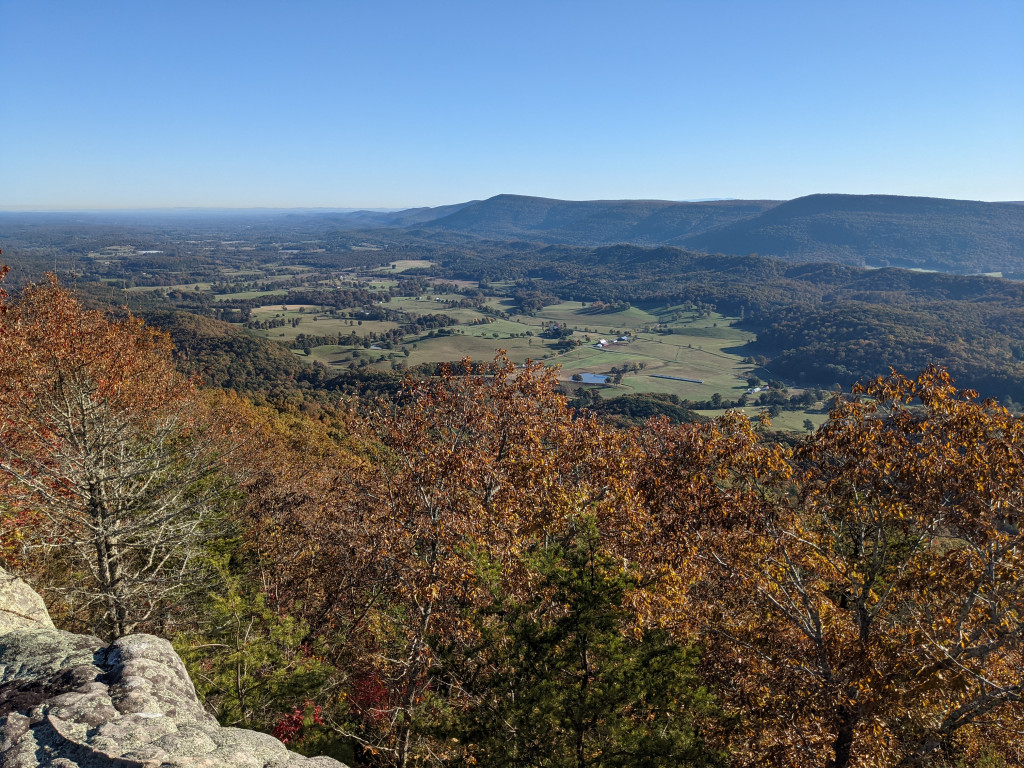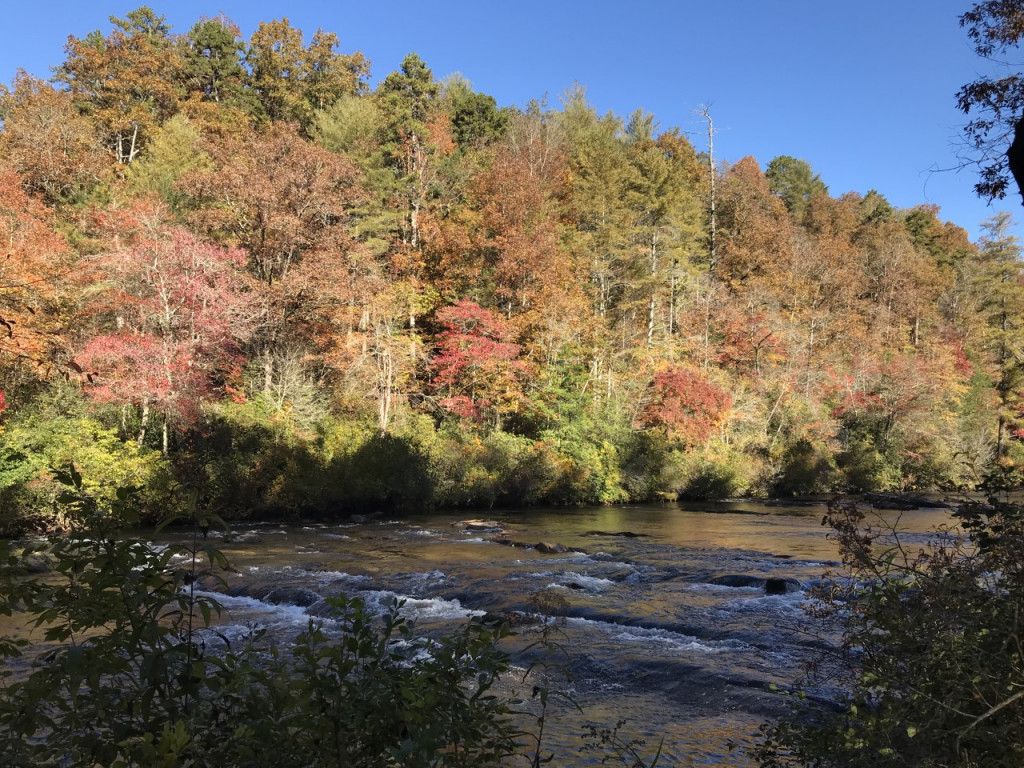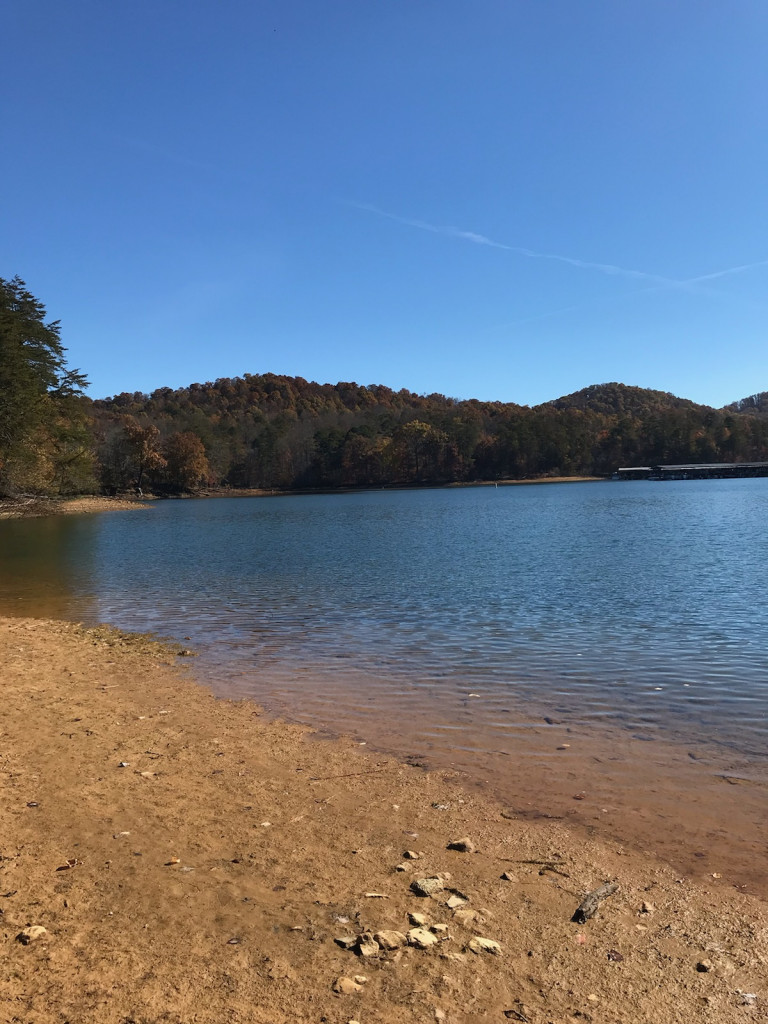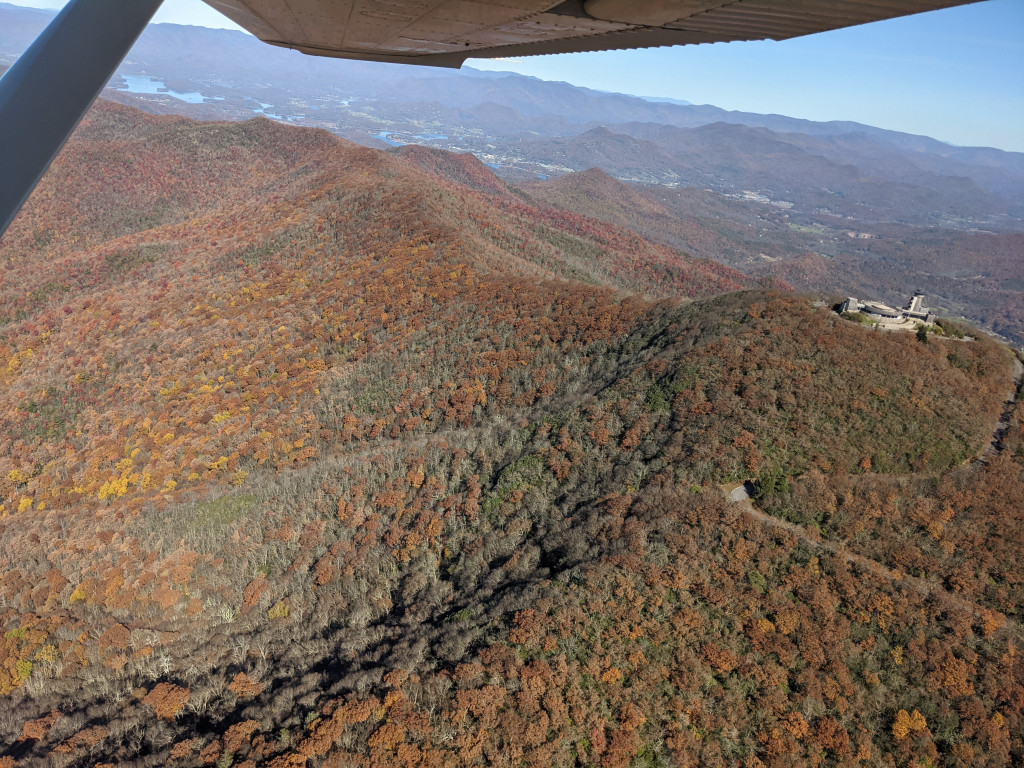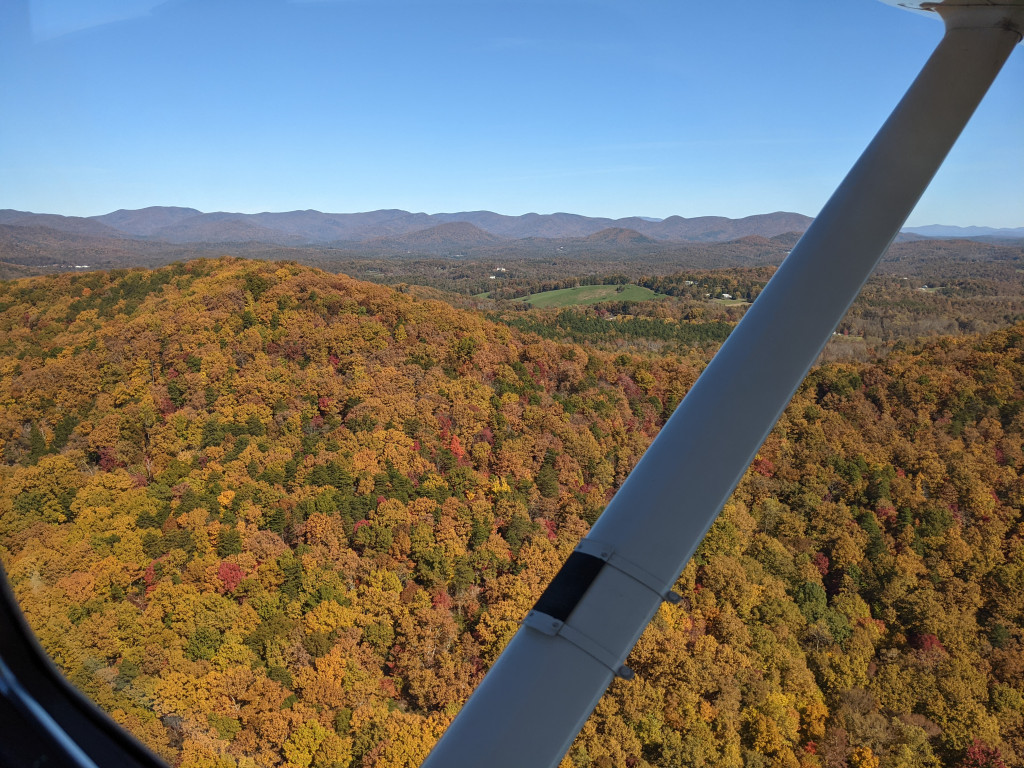Northwest GA Specific (Ridge and Valley/Cumberland Plateau):
Color change has surpassed peak in a majority of NW GA. Overlooks are showing duller shades of yellow, brown and gold, with occasional patches of red. There is very little green left and many species such as yellow poplar, sourwood, and blackgum have lost a majority of their leaves, resulting in patches with little to no color.
Maple, oak, and hickory have continued to retain leaves and are currently showing the most amount of color. Maple is responsible for a majority of the more vivid yellows and reds while oak and hickory are near peak and displaying dull browns and yellows.
Overall, total color change is around 95% as overlooks and ridges have shifted to a range of dull yellow, brown, and gold with occasional patches of maroon and yellow. Views from Lookout Mountain and Fort Mountain are showing similar characteristics in color as many species are at or surpassing peak. Overall color intensity will likely decrease in the coming week as leaves continue to drop.
Species specifics:
- Dogwood – fading to maroon and brown with significant leaf loss
- Birch – fading to brown and yellow
- Yellow-poplar – most of the leaves have dropped. Remaining few leaves show yellow or brown.
- Redbud – gfading to yellow
- Sourwood – vivid and deep reds fading to yellow and maroon wit significant leaf loss
- Sumac –dull reds with few leaves remaining
- Maple – dull yellow or red
- Birch – dull browns and yellows
- Oak – brown and yellow with occasional maroon
- Blackgum – Fading to dull reds with leaf loss
- Sassafras – shows a variety of yellow, orange, and red
- Sweetgum – fading to dull red and maroon
- Hickory – continues to display a range of yellow and brown
Percentage of color change from green to date: 95%
Leaf retention will likely be short-lived as winter rapidly approaches.
Scenic drive:
From I-75, take Hwy 136 to the top of Lookout Mountain. Continue on 136 to Cloudland Canyon, or turn onto Hwy 189 to Sunset Rock, Point Park, or Rock City. Drop down into Chattanooga via Ochs Hwy / 58, then Hwy 193 back to Hwy 136.
North Central GA:
Higher elevations are still within the “peak” color change. Oaks have taken over as the standout color scheme. Hickories have also joined in with some nice variation Some of the early turners have begun to fade. Birch leaves are largely played out for the season. Poplars are also mostly bare. Lower elevations should be in peak this week.
Species specifics:
- Dogwood – Red / Burgundy
- Birch – Sparse Yellow
- Yellow-poplar – Bare
- Redbud-Red
- Sourwood – Red / Burgundy
- Sumac – muted Reds
- Maple –Reds/yellows
- Beech-Yellows
- Oak – Bronze and Yellows
- Blackgum – Reds
- Sassafras – Yellows/Orange
- Sweetgum-Dull Yellow
- Hickory-Yellows
Percentage of color change from green to date: 95% above 3000’; 75% or less below 3000’.
Peak is here for the North Georgia Mountains. This week and weekend may well be the best coloration this season. Higher elevations may begin to fade towards the end of the week, but the lower levels now have some nice color.
With a peak change hanging on for the week, we hope for low winds the next week or two. Cooler weather will continue to accelerate leaf change and end out the color change season.
Scenic drive:
Take 180 from Suches to 19, then take 19 up to Blairsville. 76 From Blairsville to Blue Ridge is also a beautiful drive. Lower elevations drives are showing nice color now.
Northeast GA:
Understory colors are still dominated by the sourwood and younger maples but quickly fading out. Sourwood ranges from a deep glowing red to dark pink and beginning to fade, while maple ranges from deep red to light yellow. Overstory trees in the upper elevations are dominated by oaks and hickories that are ranging from light yellow to deep red with many loosing leaves above 3500 feet. River corridors have lost most of the colors except remaining yellow birches and occasional sourwoods.
Elevations above 3000 feet are still in peak period. Elevations above 2000 feet are within peak period. Species that have begun to fade are river birch, dogwood, black gum, and yellow poplar. Most species below 2000 feet are exhibiting great color.
Species specifics:
- Dogwood – primarily complete
- Birch – Yellow Birch Fair/ River Birch Poor
- Yellow-poplar – Defoliated/Brown but past peak
- Sourwood – Bright Red / Pink
- Sumac – Bright to deep reds with many defoliated.
- Maple – All elevations are yellow/red with many fully changed but good color in all elevations
- Oak – Above 2000’ light red/yellow with some deep and bright reds turning brown above 3500’
- Black gum –Red/ Fading
- Sassafras – Reds and Orange but quickly losing leaves.
- Sweetgum Purple to Yellow and some Red
- Hickory- Yellow/ Bright Yellow and losing leaves
Percentage of color change from green to date: 100% above 2000’; 95 % above 1000’.
With the exception of the highest of elevation (3500’ and above) most species are exhibiting great coloration. With rain and wind expected later in the week defoliation will accelerate but we should get at least one more excellent weekend.
Scenic drive:
This week, the Lookout Mountain Scenic Hwy through Rabun County are exhibiting the best views for color and Richard Russell Scenic Hwy is also still a good drive.
** NEW THIS WEEK: METRO ATLANTA AND OUTLYING COUNTIES:
- As winter progresses and days continue to shorten, this is bringing out the color change in lower elevations, such as the Metro Area. Yellow coloration is primarily driven by sunlight hours (and is species-specific in cases such as beech and hickory).
- As temps continue to drop, especially cool nights with sunny days, we are starting to see more red coloration coming into the lower elevations. Red is driven by environmental factors, primarily, and is most expressed when a healthy, vigorous tree, leaves excess sugar trapped in the leaf as it is abscised from the twig.
- When these sugars get left in the leaves, essential nutrients get left as well. Thus they do not go back into the tree for storage over winter. Those fallen leaves have exactly the nutrients your tree is losing, so if possible, use the fallen leaves as mulch material around the base of your tree.
- A healthy and vigorous growing season plays a big role in the vibrancy of fall leaf color. Also important to consider is the “senescence” process which is critical in the tree preparing and allocating resources for next growing season.

